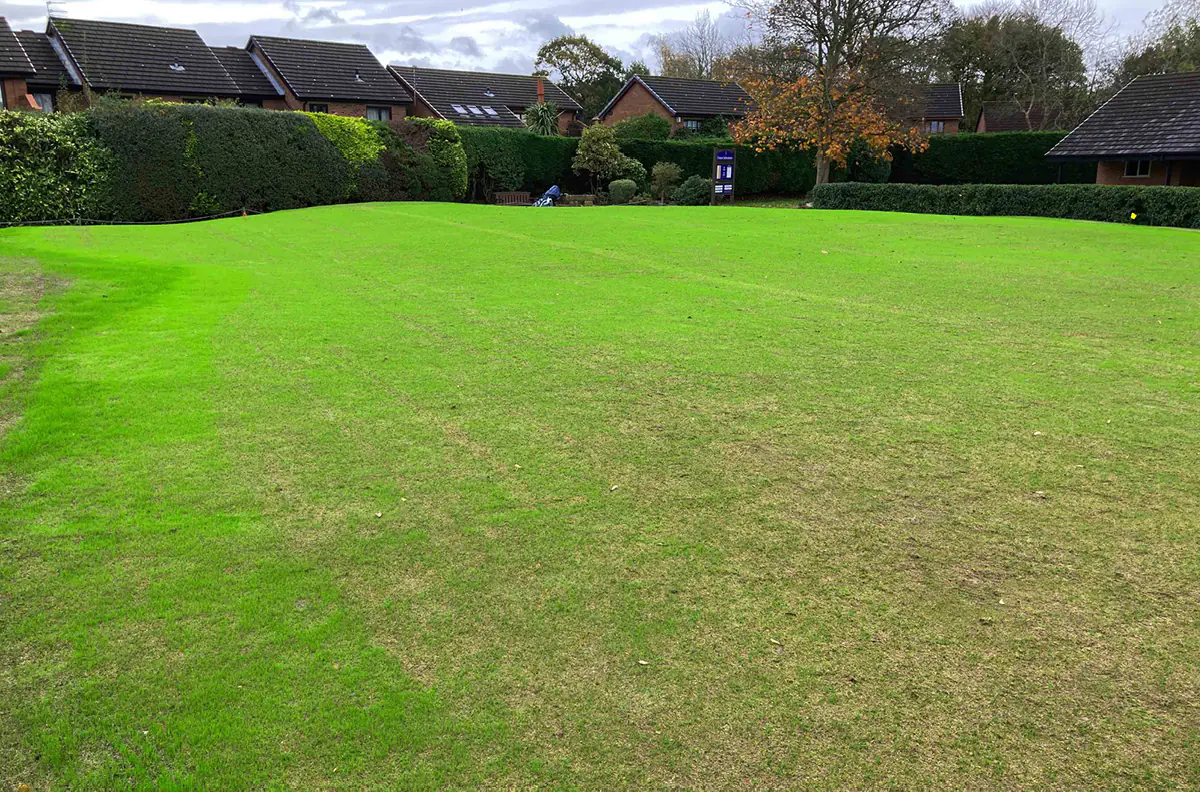Don’t fear the feed: Liquid fertiliser advice with Paul Moreton
Germinal Amenity expert Paul Moreton explains why applying a little golf green liquid fertiliser and often is an effective greenkeeping strategy.

That’s usually the end of the conversation. We are still stuck with the mindset that by holding off for as long as we can, we are somehow being sustainable and it’s more beneficial for the plant – also, there are budget and timing issues present.
US influences on liquid fertiliser application
I think back to the 2000s when the disparity between what we perceived the US greenkeepers were up to and what we in the UK thought was the better approach and how far we have probably swung towards their methods and practices regarding N applications.
A lot of this is driven by the in-depth trials and research conducted stateside and the readily available data we all seem to crave these days. I remember sitting in a seminar at the Golf Course Superintendents Association of America (GSCAA) on nutrition and the speaker asked, “How often do you feed?” Most responses were every two weeks or near to this, but one chap famously shouted, “Every seven days, baby”.
Which to many of the UK contingent was laughable. But this related to the top-line quantity of N applied on many US courses compared to the quantities we were using in the UK, but the emphasis on frequency was notable.
Looking at the importance of a regular feed programme coupled with the knowledge of what each form of Nitrogen offers is so vital. This is where we in the UK have either caught up or, more realistically, adapted the US research to suit our climate and presentation requirements.
An improved understanding of golf course maintenance
From a recent trip to the GSCAA, it was abundantly clear how similar the UK and US industries have become – walking around the trade show was just like being at BTME.
There is no coincidence as grass seed suppliers we now get much better feedback on establishment success or survival compared to 15-20 years ago when so often we heard fellow professionals doubting overseeding.
While the breeding of better cultivars has helped, this has also been supported by an improved understanding of maintenance, especially relating to the feed regime.
I still have plenty of clients actively trying to lower their N amounts, which is fine, but I think prolonging the feed rather than using smaller regular amounts isn’t healthy for any grass species. For example, when growing in a new Creeping bentgrass green, plant breeders directly recommend that greenkeepers apply regular amounts of upfront N in the liquid form of ammonium nitrate or urea.
Any time I’ve advised this, however, I get a daunting response. Whether it’s the initial fear of the amount of N being applied or the task of actually doing it, it’s something we’re not completely used to in the UK.

A liquid fertiliser programme for new Creeping bentgrass greens
- Apply 2.5 kg N/ha every five days once germination has occurred
- Increase volume to 5 kg but reduce to 10 days once mowing has commenced
Straight away, this sounds like a lot and will add to your workload. However, when you add it up, it’s approximately 85 kg for 30 weeks, and you can subtract the 12 or so weeks we don’t feed during the year, plus the colder spring months.
All this considered, it’s not as bad as it sounds N-wise per annum – it’s the consistency the plant needs. This programme will also suit an overseeding regime.
What about Poa annua?
“But what about the Poa?” you’re all screaming. Again, looking back at what was perceived as sustainable and good for the plant 15-20 years ago was not good for greenkeepers’ sanity when the members started complaining.
“Starving” out meadow grass simply isn’t a practice that’s widely accepted anymore. Beneficial species such as Browntop and Fescues still need regular nutrients, and a healthy meadow grass plant is less likely to excessively seed or sustain stress.
The emphasis of our Proactive Seeding programme is to strike a balance where the species you want to encourage have all they need to outcompete Poa while it’s held in a benign state.
Applying a complete liquid fertiliser like GL^, consisting of urea N, at these regular intervals will help not only improve your desirable species but also reduce the meadow grasses frailties while your greens conversion is taking place.
If you require any guidance on selecting or applying golf green liquid fertiliser, then feel free to contact one of our amenity grass experts.


